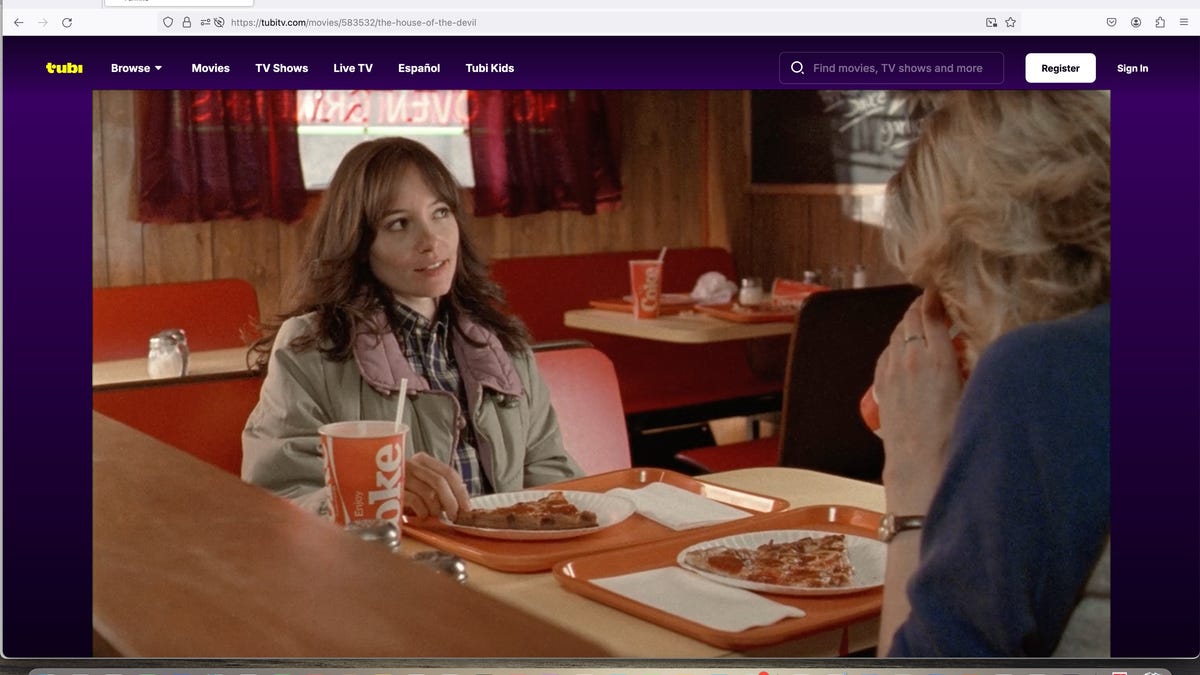Throwback slasher or paranormal movies set in the 1980s have been popping up everywhere in the last decade (perhaps due to the massive success of Netflix’s Stranger Things), but none of them really look like the 80s. Whether it’s the character styles or the modern filmmaking techniques, the small details give them away and the throwback effects fall short of the mark.
That’s why I was drawn to House of the Devil, director Ti West’s brilliant exercise in retro-realistic realism. It can be streamed with an AMC Plus subscription or for free on Tubi. This indie masterpiece takes me back to a time when horror was all about suspense, atmosphere and a slow build to a terrifying climax. It does this by staying true to the era of horror it aims to invoke.
The film follows Samantha (Jocelin Donahue), a college student desperate for money who takes a babysitting job at a creepy old mansion. She soon discovers that she is dealing with a very different charge than a child when she arrives in the country. As she is left alone for the night, she orders a pizza and shows a movie on TV as the fear gradually builds and the audience settles in for something terrifying. House of the Devil is reminiscent of classic films like Halloween and When a Stranger Calls, but magnified tenfold.
From the opening credits, House of the Devil sets the tone with a ridiculously accurate and detailed retro aesthetic. It doesn’t just take place in the 1980s – it feels like it was made then. The grainy film quality, period-appropriate costumes and hair are absolutely perfect. It’s set to a curated soundtrack of songs including The Fixx’s One Thing Leads To Another and Greg Kihn Band’s The Break Up Song. The film doesn’t just look like it’s dressing up in the tropes of the 80s, but like it was born from that time.
The film was shot on 16mm film, creating its own specialized throwback look, and it lifts cinematography directly from 80s filmmakers along with a host of other techniques to evoke the era’s classics. Everything, down to the credits, is period correct, and I appreciated all the attention given to making sure it all matched, right down to the cups in the pizza restaurant seen at the beginning of the film.

The Ulmans have an ulterior motive for hiring Sam to watch “Mother.”
Sam realizes something is wrong when she comes across evidence that the family who hired her for the babysitting job is not the same as in the photo. Realizing she may have been tricked, she tries to call 911, but she’s already eaten a piece of tainted pizza. She faints as soon as she gets a glimpse of what exactly she’s been hired to “babysit”.
The film’s path is littered with terrifying moments (just ask Sam’s best friend Megan, played by Barbie director Greta Gerwig), with believably terrifying practical effects that unsettle and chill you to the bone. The terrifying “Mother,” which Sam discovers is related to her original work, is an example of ’80s filmmaking that would make audiences sick to their stomachs.

Sam’s friend, Megan, is not at all happy with the situation at the Ulman house.
Without spoiling the climax, House of the Devil maintains a scratchy, unsettling sense of dread throughout its running time. It’s not afraid to use themes of isolation, the unknown, and betrayal to keep you on the edge of your seat, which I appreciated on my first viewing, and I’ve only grown to love it more with each rewatch. As terrible as the story is, I firmly believe that this film would not have been possible without its commitment to staying true to the era that inspired it.
If you’re looking for a horror movie that doesn’t rely on cheap jump scares or an overdone “sex is bad” trope with a bunch of teenagers being picked off one by one, House of the Devil is one of the best. you can put on your Halloween watch list. It brings the golden years of 80s horror to life in believable and decadent ways that will have you squirming in your seat. I’m still unpacking the precious climax and I bet you will be too.
